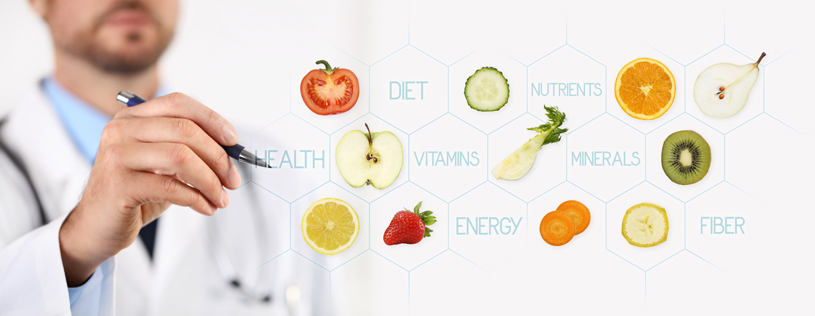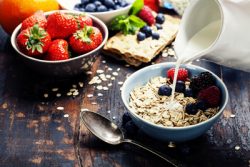Good nutrition contributes to keeping COVID-19 and other diseases away

By Dr. Grayson Jaggers
Assistant Professor of Biological Sciences, University of Southern California – Dornsife College of Letters, Arts and Sciences
The connection between the pandemic and our dietary habits is undeniable. The stress of isolation coupled with a struggling economy has caused many of us to seek comfort with our old friends: Big Mac, Tom Collins, Ben and Jerry. Overindulging in this kind of food and drink might not just be affecting your waistline, but could also potentially put you at greater risk of illness by hindering your immune system.

Hear the word “nutrition,” and often what comes to mind are fad diets, juice “cleanses” and supplements. Americans certainly seem concerned with their weight; 45 million of us spend US$33 billion annually on weight loss products. But one in five Americans consumes nearly no vegetables – less than one serving per day.
When the emphasis is on weight loss products, and not healthy day-to-day eating, the essential role that nutrition plays in keeping us healthy never gets communicated. Among the many things I teach students in my nutritional biochemistry course is the clear relationship between a balanced diet and a strong, well-regulated immune system.
 Along with social distancing measures and effective vaccines, a healthy immune system is our best defense against coronavirus infection. To keep it that way, proper nutrition is an absolute must. Although not a replacement for medicine, good nutrition can work synergistically with medicine to improve vaccine effectiveness, reduce the prevalence of chronic disease and lower the burden on the health care system.
Along with social distancing measures and effective vaccines, a healthy immune system is our best defense against coronavirus infection. To keep it that way, proper nutrition is an absolute must. Although not a replacement for medicine, good nutrition can work synergistically with medicine to improve vaccine effectiveness, reduce the prevalence of chronic disease and lower the burden on the health care system.
Impact of a Western diet
Scientists know that people with preexisting health conditions are at greater risk for severe COVID-19 infections. That includes those with diabetes, obesity, and kidney, lung or cardiovascular disease. Many of these conditions are linked to a dysfunctional immune system.
Patients with cardiovascular or metabolic disease have a delayed immune response, giving viral invaders a head start. When that happens, the body reacts with a more intense inflammatory response, and healthy tissues are damaged along with the virus. It’s not yet clear how much this damage factors into the increased mortality rate, but it is a factor.
 What does this have to do with nutrition? The Western diet typically has a high proportion of red meat, saturated fat and what’s known as “bliss point foods” rich in sugar and salt. Adequate fruit and vegetable consumption is missing. Despite the abundance of calories that often accompanies the Western diet, many Americans don’t consume nearly enough of the essential nutrients our bodies need to function properly, including vitamins A, C and D, and the minerals iron and potassium. And that, at least in part, causes a dysfunctional immune system: too few vitamins and minerals, and too many empty calories.
What does this have to do with nutrition? The Western diet typically has a high proportion of red meat, saturated fat and what’s known as “bliss point foods” rich in sugar and salt. Adequate fruit and vegetable consumption is missing. Despite the abundance of calories that often accompanies the Western diet, many Americans don’t consume nearly enough of the essential nutrients our bodies need to function properly, including vitamins A, C and D, and the minerals iron and potassium. And that, at least in part, causes a dysfunctional immune system: too few vitamins and minerals, and too many empty calories.
A healthy immune system responds quickly to limit or prevent infection, but it also promptly “turns down the dial” to avoid damaging the cells of the body. Sugar disrupts this balance. A high proportion of refined sugar in the diet can cause chronic, low-grade inflammation in addition to diabetes and obesity. Essentially, that “dial” is never turned all the way off.

While inflammation is a natural part of the immune response, it can be harmful when it’s constantly active. Indeed, obesity is itself characterized by chronic, low-grade inflammation and a dysregulated immune response.
And research shows that vaccines may be less effective in obese people. The same applies to those who regularly drink too much alcohol.
How nutrients help
Nutrients, essential substances that help us grow properly and remain healthy, help maintain the immune system. In contrast to the delayed responses associated with malnutrition, vitamin A fights against multiple infectious diseases, including measles. Along with vitamin D, it regulates the immune system and helps to prevent its overactivation. Vitamin C, an antioxidant, protects us from the injury caused by free radicals.
 Polyphenols, a wide-ranging group of molecules found in all plants, also have anti-inflammatory properties. There’s plenty of evidence to show a diet rich in plant polyphenols can lower the risk of chronic conditions, like hypertension, insulin insensitivity and cardiovascular disease.
Polyphenols, a wide-ranging group of molecules found in all plants, also have anti-inflammatory properties. There’s plenty of evidence to show a diet rich in plant polyphenols can lower the risk of chronic conditions, like hypertension, insulin insensitivity and cardiovascular disease.
Why don’t we Americans eat more of these plant-based foods and fewer of the bliss-based foods? It’s complicated. People are swayed by advertising and influenced by hectic schedules. One starting place would be to teach people how to eat better from an early age. Nutrition education should be emphasized, from kindergarten through high school to medical schools.

Millions of Americans live in food deserts, having limited access to healthy foods. In these circumstances, education must be paired with increased access. These long-term goals could bring profound returns with a relatively small investment.
In the meantime, all of us can take small steps to incrementally improve our own dietary habits. I’m not suggesting we stop eating cake, french fries and soda completely. But we as a society have yet to realize the food that actually makes us feel good and healthy is not comfort food.
The COVID-19 pandemic won’t be the last we face, so it’s vital that we use every preventive tool we as a society have. Think of good nutrition as a seat belt for your health; it doesn’t guarantee you won’t get sick, but it helps to ensure the best outcomes.
About the Author
Dr. Grayson Jaggers is an Assistant Professor of Biological Sciences at the University of Southern California – Dornsife College of Letters, Arts and Sciences. After earning a B.S. in Biological Sciences and a Ph.D. in Nutritional Biology from the University of California Davis, Dr. Jaggers joined the University of Southern California as a faculty member in the Department of Biological Sciences. His primary teaching responsibilities include upper-division courses in biochemistry, and nutritional biochemistry, as well as a general education course on the biology of food. This article is republished from The Conversation with permission.





















